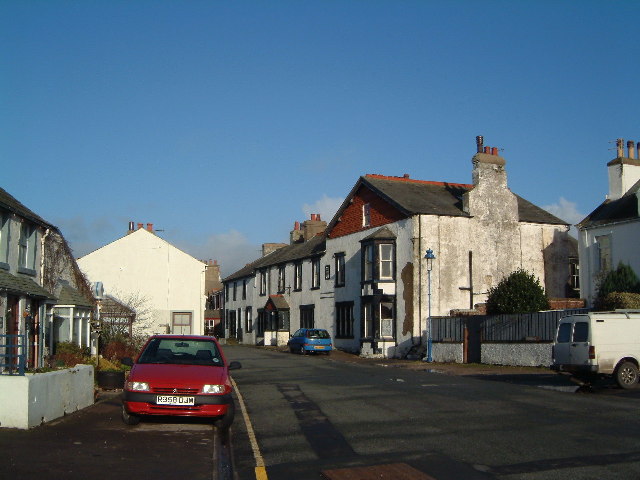Topics > Ravenglass > Ravenglass, 1848
Ravenglass, 1848
RAVENGLASS, a sea-port and market-town, in the parish of Muncaster, union of Bootle, Allerdale ward above Derwent, W. division of Cumberland, 54 miles (S. S. W.) from Carlisle, and 282 (N.W. by N.) from London; containing 337 inhabitants. The town is pleasantly situated on the sea-shore, near the confluence of the rivers Eske, Mite, and Irt, which form a safe harbour for shipping, even in tempestuous weather. It consists of a long irregular range of well-built houses, and is sheltered by the mountains of Black Combe, between which and the town are some fine meadow lands; the Eske has its source near the foot of a rugged eminence called Hard Knot. The trade is inconsiderable, chiefly consisting in bringing coal from Whitehaven for the limekilns, and in carrying back the oysters taken here, which are thought to be the finest found upon this part of the coast; a little corn and timber is exported, and some small vessels are built. An act was passed in 1845 for a railway from Whitehaven, by Ravenglass, to Furness. The market is on Wednesday; a fair for cattle takes place on the 6th of May, and others, of ancient date, for horses and cattle, on June 8th and August 5th. Near the ruins of Walls Castle, about a mile distant, where is now the mansionhouse of Lord Muncaster (a lineal descendant of the Penningtons, who have held the manor since the Conquest), many relics of antiquity, consisting of battleaxes made of flint, heads of arrows, and Roman and Saxon coins, have been discovered. About a mile and a half eastward from Muncaster House, on the opposite side of the Eske, may be traced the ruins of a place called "the city of Barnscar," the origin of which is traditionally ascribed to the Danes. The site is an oblong, about 300 yards in length from east to west and 100 from north to south, and it was intersected by one long street, and several transverse ones; the city was defended by a wall, except at the east end, and, with its suburbs, was nearly three miles in circumference. An ancient road led through it from Ulpha to Ravenglass. On Hard Knot are the ruins of a church and castle; and the remains of a round tower are to be seen on one of the adjacent mounts.
Extract from: A Topographical Dictionary of England comprising the several counties, cities, boroughs, corporate and market towns, parishes, and townships..... 7th Edition, by Samuel Lewis, London, 1848.








